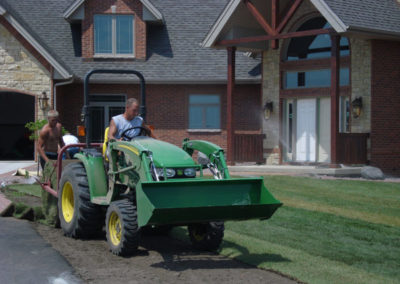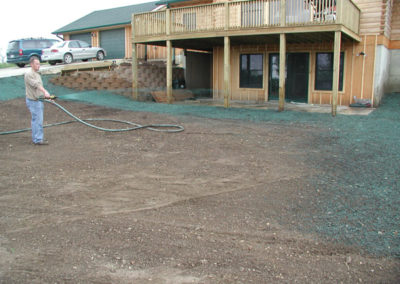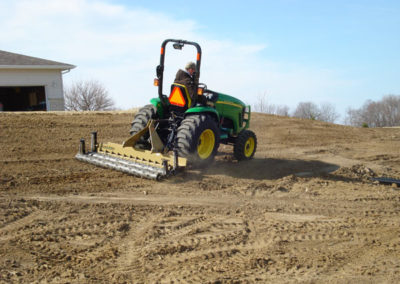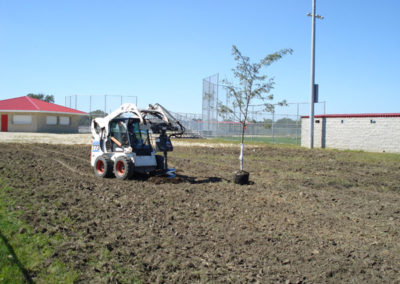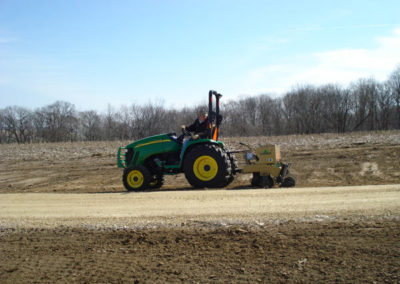Finish Grading Seeding and Sodding
When installing a new lawn the hardest question you will have to answer will be—Should I use seed or sod? Below you will find some general information on the advantages and disadvantages of both.
Advantages
*Seeding
One of the biggest appeals to this way of turf establishment is the cost. It’s much less expensive than sodding. But seeding also offers you many more options when it comes to turf types and varieties, which can be critical to the overall success of the turf – especially if you need to cover shaded areas or have sites with other special requirements. Another advantage to seeding turf is that grass then develops in the environment where it must ultimately survive.
*Sodding
Obviously, going from a dirt yard to a nice green turf area is a huge advantage of sodding. Turf establishes rapidly and it’s relatively weed-free in the beginning. It can be installed anytime during the growing season, and is great for slopes or areas prone to erosion. Plus, there are no dust or mud problems with this method of establishment, and it can be safely traveled on sooner than a seeded area.
Disadvantages
*Seeding
The time it takes to get seed established with this method is its biggest drawback. Initial establishment takes much longer than with sod. And the planting times are more limited: It’s best to seed in late summer and fall when competition from weeds is less intense. After planting, it’s critical that you maintain the proper moisture level.
*Sodding
You have less selection of turf varieties – especially shade-tolerant ones because sod is not produced in shaded environments. There are sometimes incompatibilities between sod-farm soils and the ones on which you are planting, which can cause sod to perform poorly. Sod will shrink some after installation, which may allow weeds to invade in-between pieces.
Call today to schedule a consultation with one of our landscape professionals.
